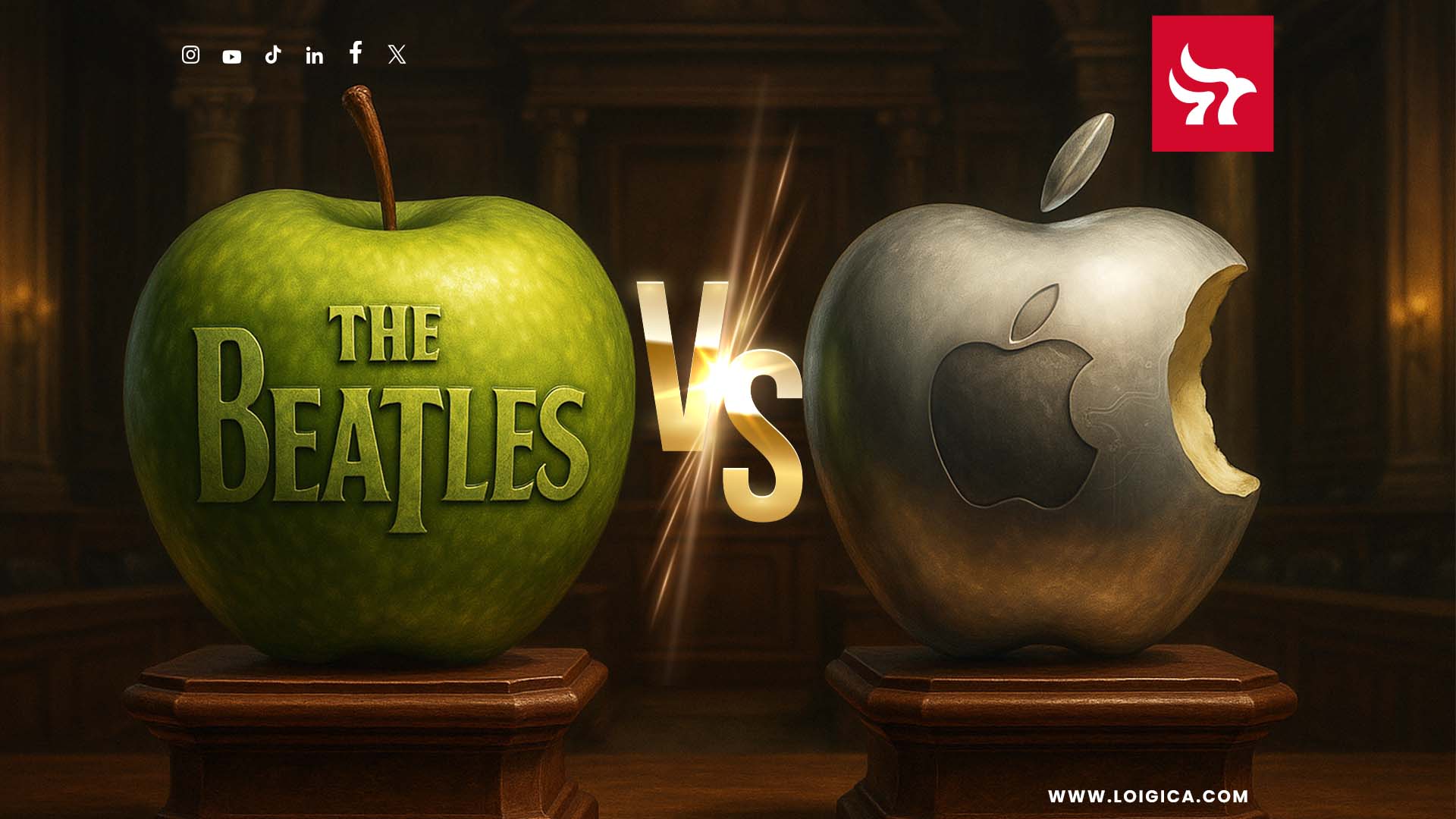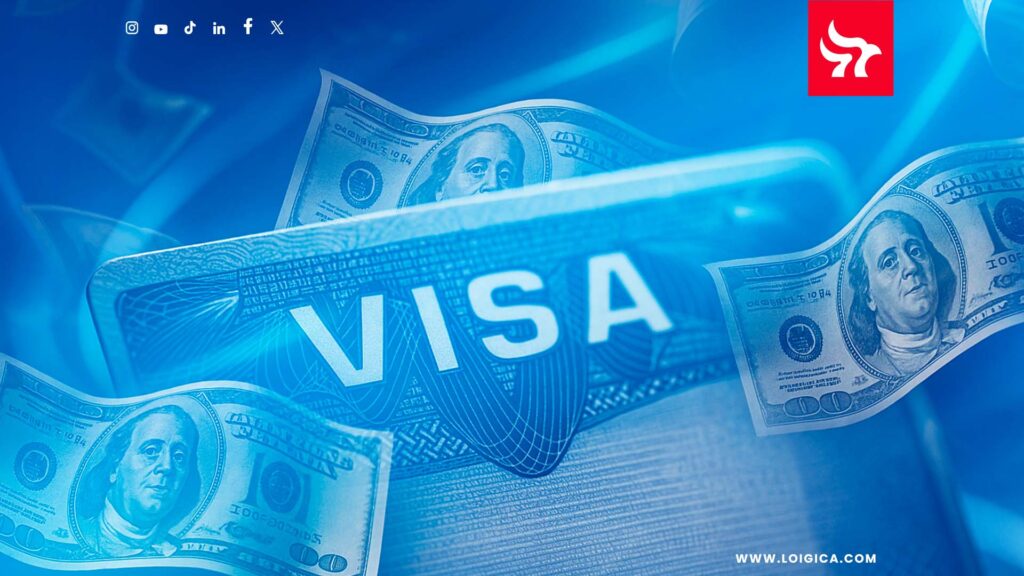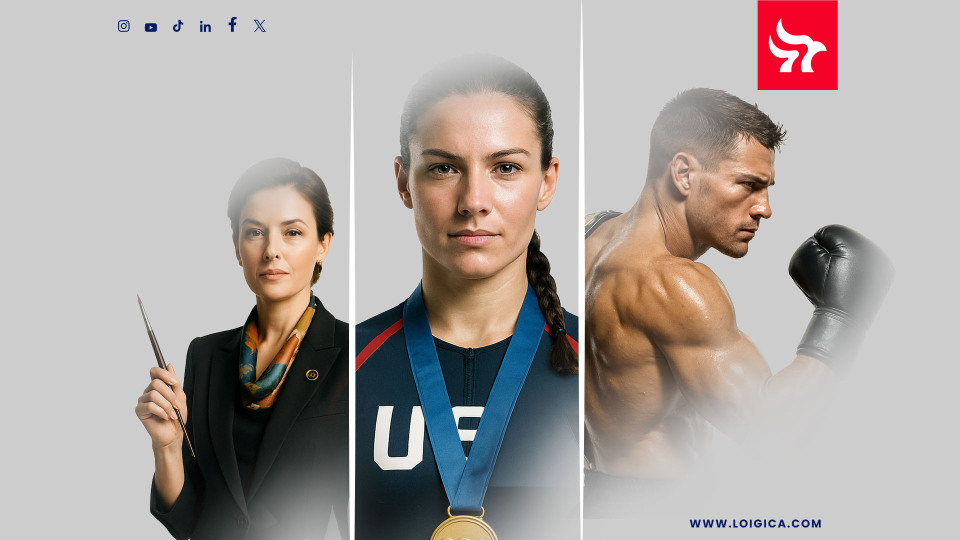Get the latest information
Suscribe to our newsletter and receive on your inbox every Monday everything you need to know on US Immigration
There were two different companies with the same name. One was The Beatles' own record label, Apple Corps. The other was a Silicon Valley startup called Apple Computer. Both loved the name "Apple," but only one could use it in music. This clash led to one of the most famous trademark battles in recent memory. The fight lasted almost 30 years and shows why picking a unique brand name (or making peace early) matters.
Two Apples, One Name
The Beatles’ record label Apple Corps used a green Granny Smith apple as its logo (shown here on a Beatles vinyl record). Apple Computer was founded in 1976 by Steve Jobs and others, and it used a rainbow-striped apple logo with a bite taken out. At first, this wasn’t a problem. One company made music, and the other made computers. Similar names can coexist in different industries under trademark law.
But as technology and music began to overlap, trouble brewed. In 1978, Apple Corps noticed the new Apple Computer and objected about the shared name. The Beatles' company sued Apple Computer for trademark infringement, arguing "Apple" belonged to them in music. The lawsuit ended in 1981 with a settlement. Apple Computer paid a small sum and promised to stay out of the music business. In return, Apple Corps agreed not to enter the computer business. For a time, the truce held and the two Apples coexisted peacefully.
The Trademark War Reignites
The truce was tested as technology evolved. In the late 1980s, Apple Computer added sound to its machines, allowing users to play music on their Macs. Apple Corps saw this as encroaching on their turf. They went back to court, claiming Apple Computer had violated the 1981 agreement by "entering" the music realm.
In 1991, a new settlement was reached. It was much more detailed (and expensive) than the first. Apple Computer paid around $26.5 million to Apple Corps. More importantly, both sides hammered out exactly who could use "Apple" for what. The Beatles' company got exclusive rights to use "Apple" on any music content. The computer company kept rights to use "Apple" on technology, even if it was used to deliver music. But Apple Computer agreed it would not distribute music on physical media (like CDs). In simpler terms, Apple Computer could make gadgets and software for music, but it wouldn’t act as a record label.
For a while, this arrangement held. In 2003, Apple launched the iTunes Music Store to sell digital songs. Apple Corps believed this went beyond what Apple was allowed to do with the name. They sued once more, arguing that Apple Inc. (formerly Apple Computer) breached the 1991 agreement by using the Apple name in connection with selling music.
The case went to trial in London in 2006. This time, Apple Inc. won in court. The judge decided that Apple’s use of its logo on the iTunes Store did not violate the prior agreement. His reasoning: Apple was using its name and logo to sell a service (a music download platform), not to brand the music itself. Consumers downloading songs from iTunes knew the music came from various artists and labels–not from Apple Corps. The court found that consumers wouldn’t think The Beatles were behind iTunes. So once again, Apple Corps lost a round.
Apple Corps planned to appeal. With the fight dragging on and costs mounting, both sides agreed in early 2007 to settle once and for all.
Peace at Last and Why It Matters
In February 2007, Apple Inc. and Apple Corps reached a final settlement to end the long trademark war. In this deal, Apple Inc. would now own all trademarks related to “Apple”. They didn’t announce the price, but news outlets reported about \$500 million paid to Apple Corps. Apple Inc. would license certain trademarks back to Apple Corps for its continued use. The Beatles could still use the Apple name and green apple logo for their music projects, but now it was with Apple Inc.’s blessing.
Steve Jobs, a Beatles fan, was glad to put the feud behind him. He famously called the saga “a long and winding road”. Peace paved the way for a closer relationship. By 2010, The Beatles’ music finally became available on Apple’s iTunes Store–a milestone that had been delayed for years by the dispute.
This case matters for more than just Beatles and Apple fans. It’s a textbook example of how trademark disputes can unfold when two businesses share a name.
Some Key Lessons
This famous legal battle teaches us many lessons:
Choose a unique name and think ahead
If Steve Jobs had picked a different name in 1976, Apple could have avoided decades of legal headaches. Brand experts note that you should consider where your brand might go in the future. The Apple vs. Apple battle shows how a name that seems fine in one industry can become a problem if you expand into another.
Trademarks are tied to industries
Trademarks exist to prevent consumer confusion. It's possible for two companies to use the same name if their products are so different that people won’t be confused (for example, Delta is an airline and a faucet brand, and few people confuse them). In the Apple case, computers and record labels seemed unrelated at first. But as music went digital, the lines blurred. The legal agreements between the two Apples tried to draw a line between technology and music, but innovation made those lines obsolete.
Settlements and coexistence agreements can work—to a point
The Apple companies tried to coexist through written agreements (in 1981 and 1991) on who could do what. This is common in trademark disputes: rather than one side completely rebranding, companies often negotiate ways to share or split the use of a name. However, such deals depend on business realities. When circumstances change (like new technology), those agreements can break down. Ultimately, Apple Inc. chose to write a very large check to truly resolve the conflict.
Trademark disputes can be costly and long
This fight lasted nearly three decades. Each round got more expensive: from $80,000 in 1981, to about $26 million in 1991, to a rumored half a billion in 2007. Beyond the payouts, consider the legal fees and business friction over the years. Defending a brand name is serious business, and companies will go to great lengths to protect their trademarks.
The Apple vs. Apple saga is a legendary case in trademark law. It’s widely cited in discussions of how far trademark rights extend and how companies can creatively settle their differences. For the public, it’s a reminder of why trademark rules exist: to avoid confusion and encourage distinct identities.
Today, when you see Apple’s logo on your iPhone or see a Beatles album with the green apple emblem, you’re seeing the outcome of this long legal dance. Two famous “Apples” found a way to share the world, but only after a battle that shows just how important a name can be.

Harry Tapias
CEO and co-founder at LOIGICA. Provides strategic immigration guidance for businesses and individuals, drawing on finance, marketing, and legal expertise from DePaul University and Nova Southeastern University. Specializes in H-1B, L-1, and PERM Labor Certification. Recognized for an empathetic and innovative approach, he has earned appointments to the boards of Vizcaya Museum and Gardens and the Miami-Dade County History Preservation Board.
This blog was written with asistance of generative AI. It is provided for informational purposes only. It does not constitute legal advice. The information presented here is based on general principles of U. S. immigration laws, as well as general information available for public search on public matters, as of the date of publication. Immigration laws and regulations are subject to change and individual circumstances may vary. If you need expert counceling on immigration matters, contact one of our attorneys.





